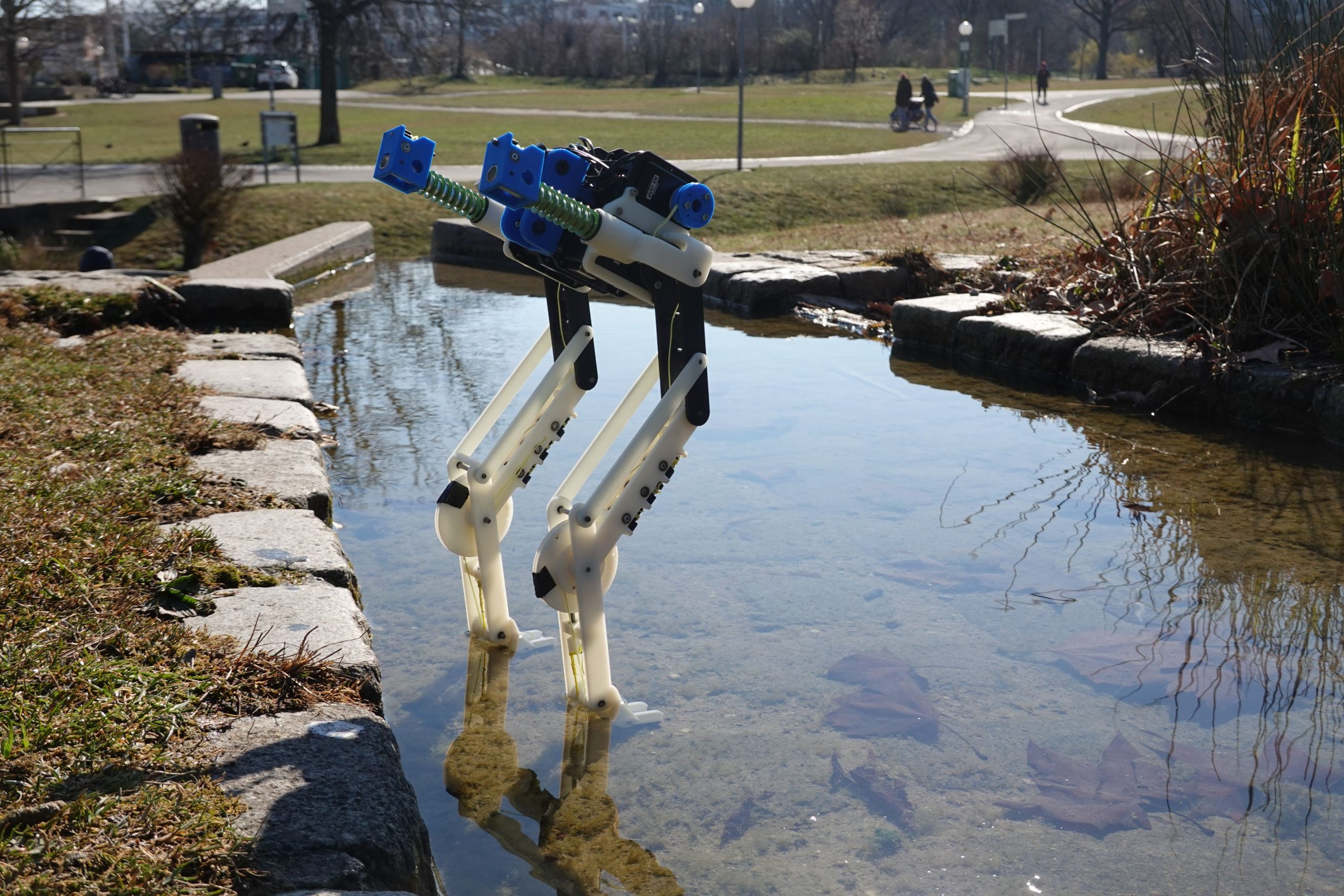Linking mechanics to energetics in the context of biorobotic design
Alexander Badri-Sprowitz
KU Leuven, Belgium

BirdBot is a robot designed for bipedal walking and running, drawing inspiration from the intricate muscle-tendon system found in ratites. Its legs feature a geometric latch-mediated mechanism that toggles between two states: an elastic, loadable leg during stance and a relaxed leg in the swing phase. The robot’s toe and cam serve as a lever and moment arm, engaging and disengaging the network of leg joint extensor tendons. Additionally, a bistable joint, positioned distally, enables swift disengagement of the leg spring at the end of stance. This disengagement is activated by the leg’s angular rotation.
BirdBot challenges the conventional idea of myotatic joint control, where flexor and extensor muscles work in opposition. Instead of neural control prompting muscle activation for joint extension force, BirdBot relies on the synergistic muscle-tendon network and its toe-triggered loading to generate joint torques. The robot’s mechanism suggests that in birds, leg joint-extending muscles might work isometrically for body weight support, offering an energetic advantage by avoiding in-parallel force production and length change.
Thanks to its bird-inspired leg mechanism, BirdBot demonstrates a significantly reduced cost of transport (by 75 percent) compared to robots of similar size and weight. We believe that similar mechanisms, like BirdBot’s, might have evolved in various animals. Synergistic muscle-tendon networks could serve multiple functions, such as adjusting leg stiffness, providing bodyweight support, enhancing propulsion, and facilitating leg angular cycling.









You must be logged in to post a comment.